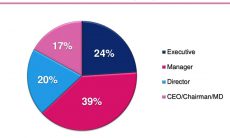Last week I attended Conductor’s C3 conference. We’re in the process of joining Conductor’s partner ecosystem because our clients see the value of the intersection of SEO and behavior-based personalization to improving mid-funnel progression.
So, that last sentence was a whole jumble of buzzword bingo terms. What does it mean?
According to a 2017 report by Demandwave, only email (73%) rivals SEO (70%) as a source of lead generation for B2B companies. I suspect that by now, despite the continued importance of email, SEO may have taken the lead.
One of the great challenges of SEO is that while it’s a great tool for top of funnel delivery, there’s a lot riding on the effectiveness of that first content experience. If Google is doing its job correctly, that content will be highly relevant. But will it be enough to earn the second click?
In every conversation that I had at C3 I asked about business measurements. Not the measures about how you’re ranking, but the measures that tell you what you’re achieving. Overwhelmingly people talked about traffic. In fact, the Demandware survey data indicates that it’s the top goal of marketers. There was little discussion about what happened beyond the top of funnel.
In a panel discussion featuring Crispin Sheridan, Miranda Gahrmann, and Patrick Compolo, titled Masters of ROI, there was discussion about whether and/or how these folks measured something beyond that first click. These pros were on it. Lots of good tips were exchanged and based upon attendance, this is an important topic for SEO professionals. So how do you get to ROI? Well, that happens through conversions.
One way that marketers can help to progress beyond that first page towards some goal is through content recommendation. Much like product recommendations on Amazon, content recommendation should be a data-driven feature that helps to direct visitors to content that is related to the journey that they’re on. The goal is progression towards the goal.
The most basic form of content recommendation is topically related content recommendation. Using a combination of site search data and topic data extracted from the page using technologies like natural language processing, content that is proven to be effective for a specific topic can be recommended.
As Google has taught us, understanding intent can lead to highly relevant search results. In the same way, content recommendation benefits when intent can be discerned. That intent can be extracted from the keywords that led to a specific journey — from site search and/or historical organic data — and combined with content to make recommendations that are not only topically relevant but also engaging for the right part of the customer journey.
More advanced forms of content recommendation analyze current session journey data and compare that data to models developed from all the historical data on the website. Patterns — often micro patterns — in the data can indicate what task the visitor is trying to achieve and can be used to recommend pages that progress towards a goal or task. As the model gathers additional data points from the visitor, it refines its predictions and delivers even more relevant content.
Supplementing all of the above with specific data about the customer and their previous journeys, either using first party or third party data, can refine the recommendations further. Knowing what was viewed on prior visits or in which industry the visitor works provides even more context for presenting recommendations.
Digital marketers often cite technology and data as the major impediments to delivering effective personalized experiences. The beauty of behavior-based personalization is that most of the data can be captured directly from the browser experience and the website’s content. There is no complicated technology stack to be implemented or complex system integrations to be managed. Using easy to install technologies, digital marketers can get started with content recommendation as a first step towards techniques that improve the yield on all the top of funnel effort.








